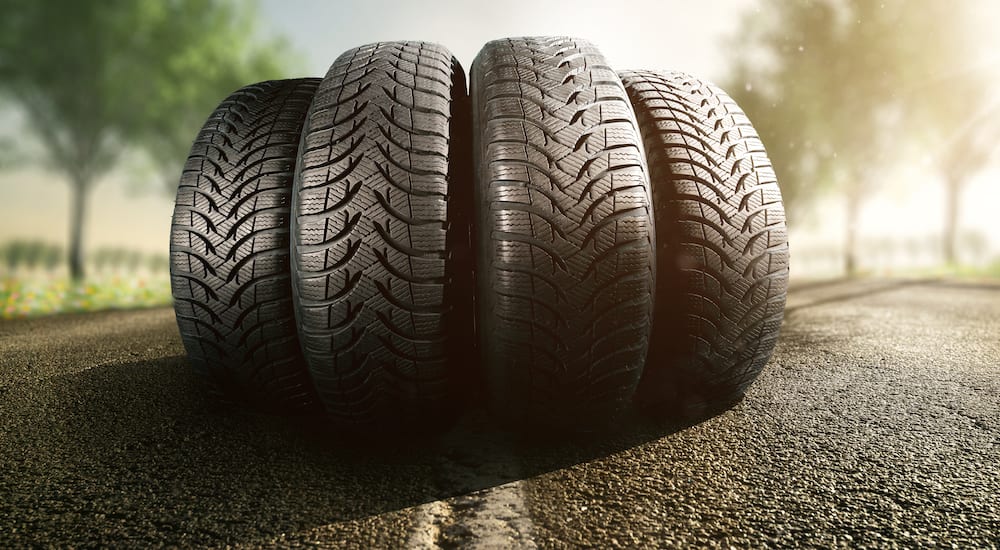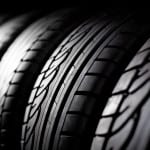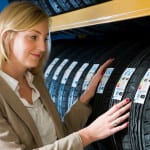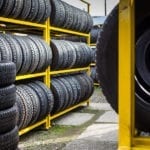Caring for your tires should be part of regular routine for every driver. We drive our cars everyday. We notice if the outside is dirty and needs to be washed. We clean, sparkle and shine so we appear neat but most often forget to check tires, the feet of our cars. The only main component that separates what we drive from what the Flintstones operated.
Don’t ignore your tires, become familiar with them, their brand and how they drive best on your particular vehicle. Gain some light background knowledge of what to be looking for when checking the condition of your tires and you’ll be confident every time you and your family pack in the car for your trip.
Regularly Check Tire Pressure
Keeping a visual and mental check on your tires is an important habit to have. Check for debris that can cause tiny holes that can eventually become large holes. Tire pressure is a very important item to keep a mental record of.
Tires can lose up to one psi (pounds per square inch) as quickly as every month.
To check the pressure of your tires:
- Make sure you know what the correct psi for your tire should be. This can be found on the sticker on the door frame of your car. It can also be found in the owner’s manual.
- If using a pencil tire gauge, there will be a graduating slider. As the pressure exits the tire and into the gauge, the slider will extend out giving you your reading.
- If using a store bought, digital gauge, it will give you an automatic reading.
It is important to remember that some air is going to escape before the gauge is properly covering the valve. This is okay, as it is such a small amount and won’t affect your reading. However, you won’t get an accurate reading until the valve is completely covered. You will know when it is completely covered by the noise it won’t be making.
There are different schools of thought on which psi to use. The recommended number is located usually on the wall of your car door, or in your driver’s manual. This psi may vary from the number on the sidewall of your tire. This is because the psi number on your sidewall is the maximum pressure for that specific tire.
That number is the highest psi that your tire will safely operate at, but it isn’t necessarily the best. If the number on the car door is lower, use that one as that is the manufacturer’s recommendation for optimum fuel economy, wear, traction and comfort.
If you have a special customized vehicle with customized tires, then you should already be aware of what the proper psi is for both your car and tire, but in that specific situation, I would consult a professional with any questions.
Why Check Tire Pressure?
Air pressure can affect the tread on on the tire. There is no way around your tire losing tread, but you want that to occur evenly. Helping control tire pressing will allow this to happen evenly, naturally. If it is over inflated the center will wear more quickly. If it is under inflated the results aren’t simply loss of tread on the outer edges of the tires. An under inflated tire is the number one cause of a blow out. This can have serious and sometimes deadly repercussions if traveling at highway speeds.
Check Tread Levels Every Month
Two-thirtytwo! Two-thirtytwo!
This is the number to remember when checking your tires. You want the shallowest tread on your tires to be no less than 2/32” deep. There is a fun and easy way to check for this. You will need a coin, a penny will do best not only for this story, but it is also a fun way to teach your children and get them in the habit of car safety.
Step 1. Have a penny ready in your hands.
Step 2. Find a spot on your tire where you can visibly see the tread is lowest.
Step 3. Holding the penny between your thumb and index finger, place it between the tread on your tire. If the tread is deep enough to completely cover the locks of hair on top President Lincoln’s head, there is enough tread on your tire to safely handle conditions on the road. If the penny is just barely reaching the top of his hair, or not at all, the tread on your tire is too low to accurately grip the road and safety is greatly compromised.
If you’re at a point where the tip of the tread is caressing Honest Abe’s hair line, you should consider that weather is going to play a large indicator in your tires ability to protect you.
Sure, it’s not winter or maybe it is but you live in Florida, rain can be just as dangerous if your tires do not have the proper tread. Especially in areas of torrential down pours, (Think it’s always sunny just in P? Parts of Florida get rain showers every afternoon that are so heavy and torrential, I’ve seen it flood parking lots one hour then dry up in another hour). This makes road conditions very unstable. Proper tread on tires will allow water to channel through the tread rather than skim the surface heightening the chances of hydroplaning which is not only terrifying but can cause major accidents.
Switch Tires Out Seasonally
Winter is coming. Ned Stark foreshadowed this with same impending doom that Northerners who are soon to be burying themselves out of endless snowstorms understand. While we want to stay snowed in and snuggled up, life goes on. And whether it be the mountain or work calling, you still must get in your car and go.
Snow tires are a the only way to ensure a safe commute this winter and every one to follow. There are many reasons why snow tires are different and superior to all season tires. Snow tires take into consideration temperature drops which affects your tires durability and pliability. Snow tires are studded which help perform better in icy conditions, stop and start on hills and maneuver in deep snow.
Likewise, it is best not to keep your snow tires on during the warmer spring and summer months. Because snow tires are specialized they do run a bit more expensive and a good set should last three or four seasons provided they be properly cared for. Wearing snow tires in summer months will wear down the studs, loosen grip and will be compromising their ability to protect you the following winter.
Tire Rotation
It is recommended to rotate tires every 5-8000 miles. Like all of the above mentioned items that can and will affect your tire’s longevity and life, rotation is just one more way to give the extra care and attention to your tires. Rotation is necessary.
It not only takes into consideration, tread, rear, front and all wheel drive, it is the last thing you can do to maximize value to your tires and comfort in your drive. There are specific rotations for each type of rear wheel, front wheel and all wheel drive.
Your mechanic will know which is pertinent to your vehicles’ needs. Each of these greatly affects how tires respond to brakes, traction and road conditions. The wear and tear is inevitable, but we want that to happen evenly, naturally. Rotating tires allows for this process to occur in a way that optimizes safety and keeps a smooth ride.
Because tires are not inexpensive, we should be reminded to look at them as an investment. They are the feet to our vehicles which are extensions of ourselves. So often something goes wrong with our car or tires and instead of realizing the problem could have been possibly avoided by proper care and maintenance, we throw our hands up in exasperation and curse wildly (well, maybe not all of you do).
This is an odd way of treating something that we use daily and trust to protect not only our self but our most precious loved ones as well. Taking the extra time to truly care for your tires is proving to yourself and loved ones that safety is paramount.







